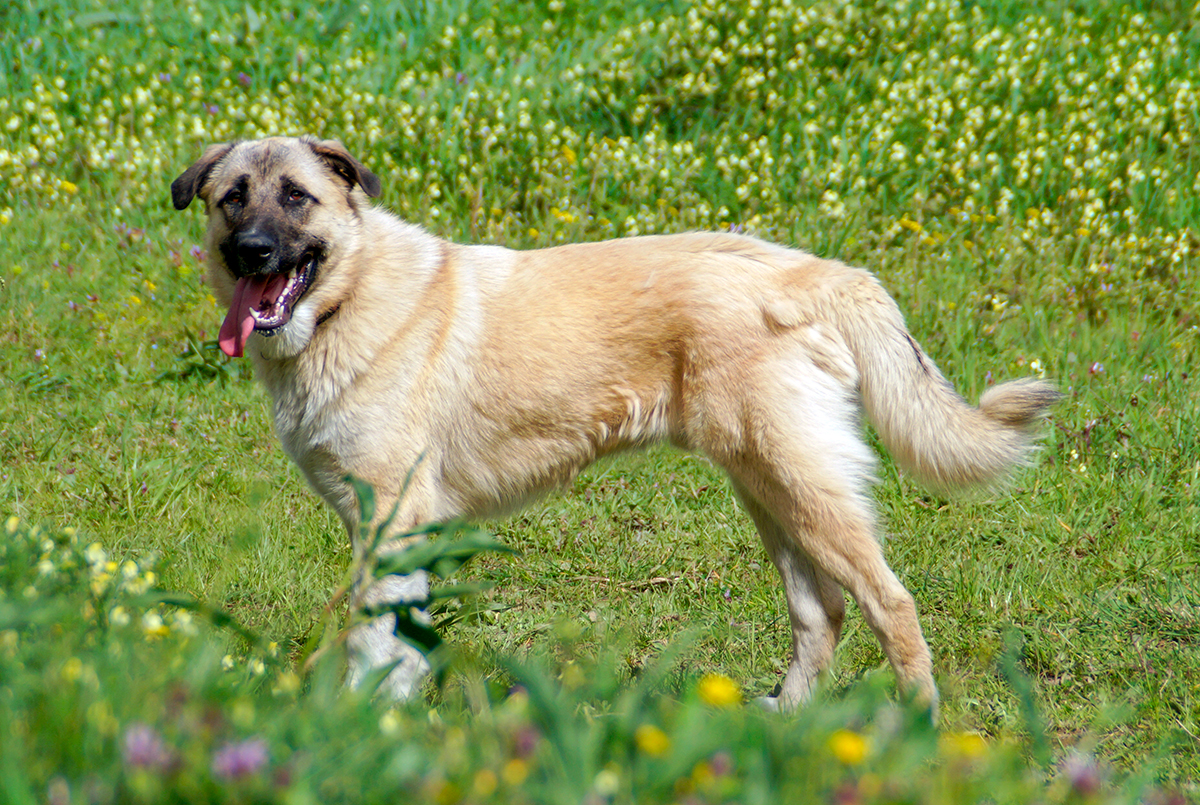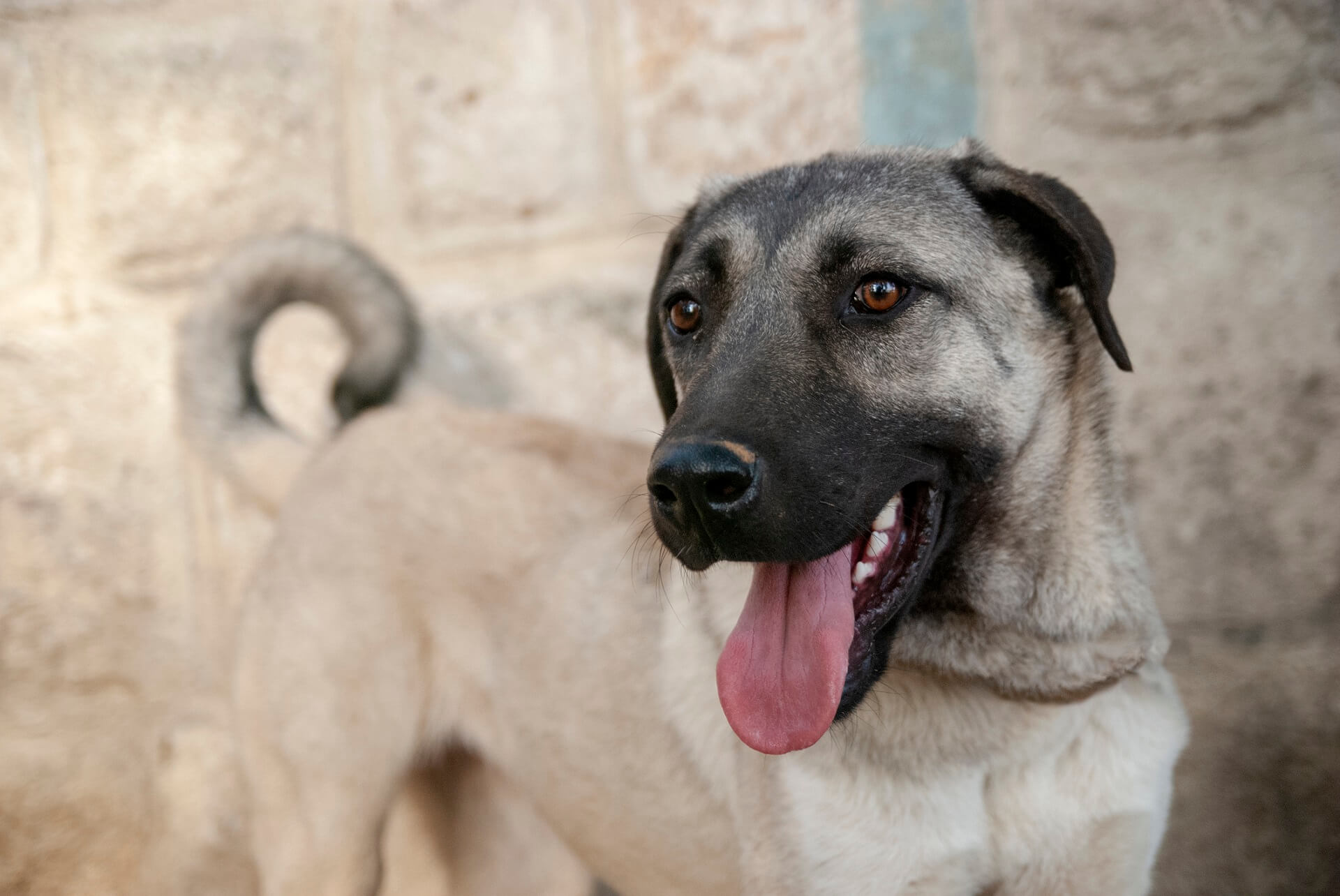Kangal Dogs: Majestic & Powerful Breed Guide
Is there a breed of dog that embodies both ancient heritage and modern resilience? The Kangal, a powerful livestock guardian, stands as a testament to the enduring bond between humans and canines, offering a glimpse into a world where duty and loyalty are paramount.
Hailing from the Sivas province of Turkey, the Kangal Shepherd Dog, often simply referred to as the Kangal, is more than just a dog; it's a living legend. Its origins are shrouded in the mists of time, with evidence suggesting its lineage traces back to ancient times. Bred for centuries to protect livestock from predators like wolves, bears, and jackals, the Kangal has evolved into a breed of exceptional strength, intelligence, and unwavering loyalty. The Kangal's history is interwoven with the nomadic cultures of Anatolia, where these dogs were indispensable partners in a harsh and unforgiving environment. Their role was not simply to bark; it was to actively defend their flock, often facing mortal danger with stoic courage. This history has shaped the Kangal's character, instilling in them a protective instinct that is both impressive and fundamental to their being. The breeds reputation for vigilance and its ability to make independent decisions in challenging circumstances are directly linked to its historical function as a working dog.
| Attribute | Details |
|---|---|
| Breed Name | Kangal Shepherd Dog (Kangal) |
| Origin | Sivas Province, Turkey |
| Purpose | Livestock Guardian |
| Size | Males: 30-34 inches tall, 110-145 lbs; Females: 28-32 inches tall, 90-120 lbs |
| Coat | Short to medium length, dense double coat; Color varies, but is predominantly solid fawn to gray-beige with a black mask. |
| Temperament | Protective, loyal, independent, intelligent, calm with family, wary of strangers. |
| Lifespan | 12-15 years |
| Known Health Issues | Hip and elbow dysplasia, bloat, and hypothyroidism |
| Training Needs | Early socialization and firm, consistent training are essential. |
| Exercise Needs | High. Requires a large, securely fenced area and regular exercise. |
| Reference | American Kennel Club (AKC) Kangal Shepherd Dog Information |
The physical attributes of the Kangal are as impressive as their historical role. These are large, powerful dogs, built for endurance and agility. Their muscular build is covered by a dense double coat, providing protection from both harsh weather conditions and the bites of predators. The coat color typically ranges from fawn to a light gray-beige, often with a distinctive black mask. This coloration allows the Kangal to blend seamlessly into the Anatolian landscape, providing them with an element of surprise when facing threats. Their powerful jaws and strong bite are essential for defending their charges, while their keen senses of sight and hearing allow them to detect danger from a considerable distance. The Kangal's physical characteristics are a testament to selective breeding over centuries, resulting in a dog perfectly adapted to its working environment.
The Kangal's temperament is a critical aspect of their suitability as livestock guardians. They are fiercely protective of their family and the animals they are tasked with guarding, showing unwavering loyalty and courage. However, they are also known for their gentle nature with children and their ability to form strong bonds with their human companions. This apparent duality is a key aspect of the breeds appeal. While they are wary of strangers and naturally territorial, the Kangal is not inherently aggressive. Their protective instincts are focused on their flock, and they are generally calm and composed unless provoked. This careful balance of protective instinct and inherent stability makes them exceptionally effective guardians.
Training a Kangal requires a specific approach. Early socialization is paramount, exposing them to a variety of people, animals, and environments from a young age. This helps to prevent excessive wariness and ensures they can differentiate between potential threats and harmless situations. Consistent, firm, and positive reinforcement training methods are essential. The Kangal is an intelligent breed, but they are also independent thinkers. They respond best to a trainer who can establish clear boundaries and maintain their leadership role without resorting to harsh methods. Their training should be tailored to their specific working purpose. The Kangal requires extensive space. They need a large, securely fenced area where they can roam and patrol. Regular exercise is crucial to their physical and mental well-being, as a bored or under-exercised Kangal can become destructive.
The Kangal's role in modern society extends beyond its traditional function as a livestock guardian. These dogs are increasingly recognized for their potential in various other roles. Some are employed in law enforcement or search and rescue operations, utilizing their intelligence and keen senses. Their protective instincts also make them effective family companions for those who are prepared to provide the necessary training and environment. Its important to recognize, though, that the Kangal is not a suitable pet for everyone. Their size, protective nature, and exercise needs require a specific lifestyle and commitment. The Kangals suitability for a pet owner depends largely on their experience with large breeds, their ability to provide adequate training and socialization, and the availability of a secure, spacious environment.
The breed's preservation is also an important consideration. The Kangal is recognized by several kennel clubs around the world, and efforts are underway to maintain the purity and health of the breed. Responsible breeders focus on preserving the traditional working abilities, temperament, and health of the Kangal, while also adhering to ethical breeding practices. This careful management is essential to ensuring the Kangal continues to thrive for generations to come. The ongoing efforts to preserve the breed reflect its increasing popularity and its value in both working and companionship roles.
The challenges of owning a Kangal are significant and should not be underestimated. Their independent nature requires a confident and experienced owner who can establish clear boundaries and provide consistent training. Their strong protective instincts necessitate early and ongoing socialization to ensure they are well-adjusted and can differentiate between threats and benign situations. The cost of owning a Kangal can also be considerable, encompassing expenses such as food, vet care, and the provision of a secure and spacious environment. Prospective owners must carefully consider these factors before bringing a Kangal into their home.
There are several organizations dedicated to the Kangal breed, focused on promoting their responsible ownership and welfare. These organizations provide education, resources, and support to owners, breeders, and enthusiasts. They often organize events such as breed shows, educational seminars, and working trials. These gatherings offer an opportunity for people interested in the Kangal to connect, share information, and learn more about the breed. The dedication of these organizations and the people behind them is vital to the continued preservation and responsible ownership of the Kangal breed.
The Kangal Shepherd Dog's legacy is a fascinating blend of history, practicality, and unwavering loyalty. Their future depends on the commitment of those who understand and appreciate their unique qualities. By recognizing the breed's specific needs and providing the necessary care, training, and socialization, we can ensure that these magnificent dogs continue to thrive in both their traditional roles and in their growing roles as family companions. The Kangal stands as a living testament to the enduring power of the human-animal bond, and serves as a reminder of the importance of preserving working breeds and honoring their proud heritage. The continued appreciation of the Kangal is a reflection of our respect for the natural world and the role dogs play in our lives.
The impact of the Kangal transcends geographical boundaries. Breeders around the world are now working to maintain the breeds integrity. This includes the U.S., where the Kangal is gaining popularity. With their increased presence outside of their native land, organizations like the Kangal Dog Club of America work to educate prospective owners about this special dog. These organizations are dedicated to maintaining the breeds standards and ethical breeding practices, with the goals of preserving its genetic purity and its unique working traits. This helps ensure the Kangal continues to be recognized for its capabilities, beauty, and historical significance.
In Turkey, the Kangal is more than just a working dog; it's a symbol of national pride. Their presence in Turkish culture is deeply rooted, and they appear in literature, art, and folklore. The Kangal's image is often used to represent strength, loyalty, and the enduring spirit of the Turkish people. This cultural significance underscores the breed's importance and the respect it commands in its homeland. Government initiatives and conservation programs are frequently put in place to protect and promote the Kangal, acknowledging its importance as an integral element of Turkey's cultural heritage.
The Kangal continues to capture the imagination. Its striking appearance, coupled with its working abilities and gentle disposition with its family, makes it a truly remarkable breed. Its story is a powerful reminder of how the selective breeding of dogs can result in a companion perfectly suited for a specific role. The Kangal, with its legacy of guarding livestock, is a breed that demands respect, but rewards those who understand and appreciate its unique qualities with unwavering loyalty and companionship.


